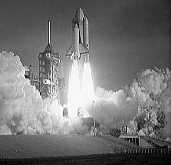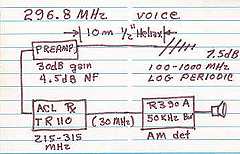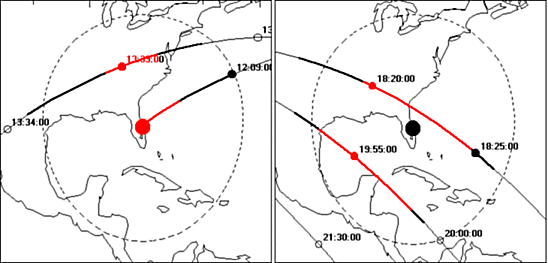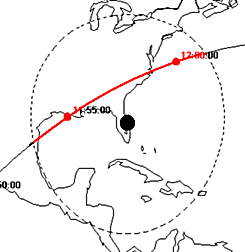 STS-1
receptions in Florida made by Richard S Flagg
STS-1
receptions in Florida made by Richard S Flagg STS-1
receptions in Florida made by Richard S Flagg
STS-1
receptions in Florida made by Richard S Flagg
Article edited by Sven Grahn
My friend Dick Flagg, who then lived in Melbourne (and now lives in Hawaii), Florida and worked at Patrick AFB (the HQ of the Eastern Test Range), had ample opportunity to watch launches from the Cape, which is just "next door" to where he lived. This is what he wrote a week after the end of the flight:
"..Went out [to the Cape] for the launch Friday morning. Left the house at 1 a.m. and didn't get back until 2 p.m. [the launch was scrubbed] An exhausting experience, so on Sunday decided to stay home and not get into the terrible traffic. Watched on TV, saw it from the front porch and heard signals on 296.8 MHz. All in all - lots of fun!. Enclosed is a composite tape of signals received during the flight....." (hear Dick introduce the recordings)
 The
recordings reproduced here come from that tape cassette. All recordings
were made in the AM mode on 296.8 MHz which the Shuttle used
extensively
on this first flight. Later in the program, the VHF AM voice was used
only
during teh first 30-35 minutes of flight. The proximity of Dick's
location
to the ground station at the Cape makes it possible to notice uplink on
the same frequency (simplex). The antenna on the orbiter used for this
frequency was an annular slot on the bottom of the fuselage, hidden
behind
ceramic tiles.
The
recordings reproduced here come from that tape cassette. All recordings
were made in the AM mode on 296.8 MHz which the Shuttle used
extensively
on this first flight. Later in the program, the VHF AM voice was used
only
during teh first 30-35 minutes of flight. The proximity of Dick's
location
to the ground station at the Cape makes it possible to notice uplink on
the same frequency (simplex). The antenna on the orbiter used for this
frequency was an annular slot on the bottom of the fuselage, hidden
behind
ceramic tiles.
The receiving system used by Dick was described on the back of the tape cassette that he sent me (see picture on the right). A steerable 100-1000 MHz log-periodic antenna with 7.5 dB was the core of the system, followed by a pre-amp, a downconverter and the tried-and-true Collins R390A war surplus shortwave receiver working in the AM mode.
It is fascinating to listen to the clipped voices of the crew during climbout from the Cape. I have edited out the silent parts. You can hear the crew call: "Ignition, Lift-off, Tower clearance, roll program complete, Max-Q,..."
The map below shows the passes during the first day when Dick picked up voice signals. Here is a list of links to his receptions the first day:

On the last day in orbit Dick also picked up the crew on 296.8 MHz. For example, on Revolution 33 with Acquisition-Of-Signal at 1154 UT the crew described what they saw at the Cape (I have edited out the silent parts): the Shuttle landing runway and the VAB (The Vehicle Assembly Building). The map shows that they flew north of the Cape during this exchange.
